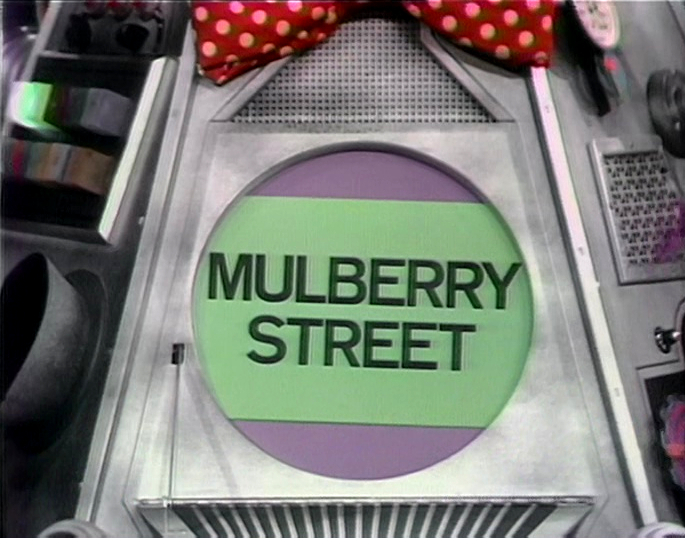The funny thing about children's programming is that it is rarely made by children. People who were once children are pretty skilled at tapping into what children enjoy, but unless they interact with them on a daily basis, there can be a large disconnect between the generations.
Sesame Street never seemed to fall into that trap, however. The creators understood children, but they also didn't pander to them. They just focused on making an educational show that could be watched with parents. There was a universal appeal that didn't depend on an age range. Even after all these years, watching Sesame Street characters recite the alphabet or count to 20 remains as captivating as ever. But, every so often, there is a misstep.
Between the filming of each season of the show, the Sesame Street staff would brainstorm ideas for new recurring characters. Other minor puppets may appear in the middle of a season and grow into larger stars, but these cases are rare. Most recurring characters are planned and developed to be that way. Today, this practice has decreased, since the cast has grown so large, producing only one new character every few years (the most recent being Abby Cadabby and Murray Monster). But in the early years, nearly half a dozen characters would be added at a time. These characters usually experienced very successful runs, and many still appear to this day. Even if they started appearing on a less regular basis, a character would only be truly retired when their main puppeteer died or left the show.
The exception is S.A.M. the Robot.
How could something with complicated functions and sharp edges not be a huge hit with kids?
Sources differ, but Carroll Spinney, Jerry Nelson, and Jim Henson all claim to have had some input in the construction of this character. In an obvious attempt to cash in on the science-fiction wave that was captivating the youth of the '70s, it was decided that a robot would be agreat addition to the cast. But this puppet has going to be large and intricate, and it would constantly malfunction and possess a basic understanding of human functions and interactions. This was sure to be a hit!
Early Henson sketches. I'm kind of fond of the little spider-legged one on the first page.
So in 1972, in the first episode of Sesame Street's fourth season, children across America were introduced to this Super Automatic Machine, also known as Sam the Robot. And, it seems as if they had used every joke they could think to make with this character right in his introductory scene.
In making this character, the creators seemed to have forgotten the appeal of robots to children: they are supposed to be cool. Sam was not sleak and aero-dynamic. He wouldn't hold up in a robot war. He wasn't quiet and mysterious. He could have been endearing if he weren't so self-righteous and unemotional. Children want robots that can do things for them and be their friend. Sam was cumbersome, unsympathetic, and unreliable. Any basic kitchen appliance would have made a better robotic companion than Sam.
He doesn't even know the name of the street we live on!
Eventually, the writer's decided that they had to add some sort of personality to him, so they tried to teach him some emotions. The Yip Yip Martians had far better results during their lesson.
Love. Filthy robotic lust. What's the difference?
Sam's stay on Sesame Street lasted only a few years, but that was just enough time for him to be immortalized in another hilarious attempt at appealing to children. This time, in comic books! Yes, Sam the Robot is the only Sesame Street character to officially pair up with Spider-Man.
I guess we should expect him to make a cameo in The Avengers, right?
As part of a crossover between Marvel Comics and the Children's Television Workshop, in an issue of Spidey Super Stories, the web-slinger teamed up with the cast of The Electric Company and Sam the Robot in a Star Wars parody that reminds me why I never read superhero comic books. Sam was filling in for R2D2/C-3PO, except he came with a few new abilities. Like karate-wheel-kicks-of-death!
If he fought more bad guys like this on the show, maybe he would have stuck around longer.
He did manage to inspire a spiritual successor in a late '00s direct-to-DVD Sesame Street adaptation of A Christmas Carol with Sam the Super Automatic Ghost of Christmas Future.
So that's worth something, I suppose.
Alas, Sam the Robot was not meant for this street. As with other needlessly complicated Muppet creations (like The Muppet Show's Vend-A-Face), the writers found themselves struggling to come up with justifiable material for the character. Children's television was just not ready for a malfunctioning, non-threatening, awkward-looking robot. It wouldn't be until a decade later when Conky from Peewee's Playhouse showed us how it was done. Puppeteer Jerry Nelson tried to fight for Sam's presence, saying that his belly screen could be used to show cartoons (again, preceeding the King of Cartoons from Peewee's Playhouse). But, unfortunately, the writer's decided, after three years, it was time to pull the plug.
The staff of Sesame Street created the most memorable characters of our childhood. This time, however, they made a real clunker.

Note: Sam the Robot died on his way back to his home planet.







No comments:
Post a Comment